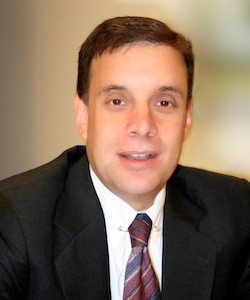Markets rise and fall, and short-term trends come and go. But one seemingly here-to-stay reality for many trading and investing firms in an increasingly global and interconnected market is the need to be involved in more asset classes, over a broader swathe of geography.
An equity trader may move into derivatives, fixed income and/or foreign exchange. Perhaps a U.S. market participant who trades European shares adds connections to Latin America and Asia. More granularly, consider a trader who buys and sells Apple and Google on the Nasdaq exchange, and is looking to hedge exposure via German Bunds or the Chinese yuan.
To be sure, perceived profit opportunities are the motivators for multi-asset, multi-market trading. But technology, in the forms of software and hardware, is the linchpin and the enabler.

Vijay Kedia, chief executive, FlexTrade Systems
“Multi-asset trading has become increasingly important to a broader audience,” said Vijay Kedia, chief executive at FlexTrade Systems. “This has happened as more asset classes — beyond just equities – have become tradable via algorithms. Whether it is equities, FX, listed options, or futures – it made sense to bring it all together on one platform.”
Traders and investors have expanded their repertoires over the past decade amid an increasingly global economy and market, and as the U.S. lost some of its comparative edge vis-a-vis the rest of the world. The U.S. remains the world’s largest economy, but growth has slowed since 2000, dimming the allure of U.S. stocks; at the same time, economic concerns have compressed developed-market bond yields to near-negligible levels.
“Opportunities aren’t what they once were, at least in the U.S.,” said Steve Sanders, senior vice president of marketing and product development at Interactive Brokers. “If you need extra income, you may at least consider educating yourself about covered calls or other strategies. If you need to diversify, you may need to consider Asia or other geographical regions.”
FlexTrade, based in Great Neck, New York, is a leading provider of multi-asset systems for traders operating on an “open” basis with multiple executing brokers and clearing firms, according to one proprietary trader. Interactive Brokers, based in Greenwich, Connecticut, is a go-to provider for traders operating on a “closed” basis with a single executing broker and clearing firm, this trader told Markets Media.
Latent Complexity
An automaker needs to build power and complexity into a high-performance vehicle, while also providing the driver with a simple interface. Similarly, multi-asset trading systems must include cutting-edge technology to allow for the most functionality at the fastest speed, while making for a simple and streamlined experience for the end user.
For Interactive Brokers, the main technological challenge is to make its core Universal Account product look and feel like a single account for U.S. market participants, while enabling trading of multiple assets and compliance with the U.S. Securities and Exchange Commission and the Commodity Futures Trading Commission.

Steve Sanders, senior vice president of marketing and product development, Interactive Brokers
“Underneath the hood of the Universal Account is the infrastructure to support both a commodities and a securities account,” Sanders said. “This design is required because in the U.S. there are two regulators, and securities and commodities accounts need to be margined separately.”
Interactive Brokers’ Universal Account, launched in 2002, allows trading of stocks, options, futures, foreign exchange, bonds and funds around the world, Sanders said. A key appeal is its streamlining of trading across borders, which previously entailed multiple accounts, and back-office currency conversion.
“This can be expensive and inefficient,” Sanders said. Using Universal Account, a U.S. investor with a dollar account can instead buy U.K. stocks in two ways: by buying pounds and then rather than converting for pounds, taking out a margin loan on pounds secured by U.S. dollars; or by converting dollars to pounds through the account itself, which includes direct access to interbank prices from 13 large FX dealers.
Regulation can be a headache for cross-border as well as multi-asset trading. Sanders cited an example of a German customer who wants to trade German stock; margin requirements may be lower than in the U.S., but Interactive Brokers would be forced to apply U.S. margin rules and possibly be at a competitive disadvantage to overseas brokers. The company has considered moving more clearing and other operations overseas to address this, Sanders said.
Kedia cited two primary challenges in developing and maintaining a multi-asset trading platform, such as FlexTrade’s FlexTrader. “First, for every asset class, the desktop interface is very specific and specialized,” he said. “For instance, an equity-centric front end might confuse an options trader, while the trading blotter for a FX platform looks markedly different from one built for an equities trader. But you do need to bring it all together.”
“Second, market data presents a different range of challenges,” Kedia continued. “For equities, you can get consolidated data from one feed, such as Reuters or Bloomberg. But with FX, there is no centralized feed. Every customer has their own favorite set of banks and other liquidity providers.”
In bringing it all together on one platform, “you want to be cognizant of your data and getting the feeds from the right source and location,” Kedia said. “You also have to manage risk in a centralized way. Optimizing that is a big challenge.”
“If you trade multiple asset classes, it is important to understand risk attribution, and to aggregate risk across all asset classes,” Kedia continued. “If you trade multiple asset classes simultaneously, a multi-asset trading platform gives you the opportunity to build cross-asset algorithms. However, if you build cross-asset algorithms, you may want to view relative performance which could be in terms of price, volatility or other criteria.”
Aside from having the right technology in place, multi-asset traders must be aware of the greater demands of the practice. “The primary risk is not having a good handle and solid understanding of the risks and exposures to all markets at all times,” Kedia said. “If you just trade stocks on the NYSE, you can trade until 4 p.m. and sleep at night. With FX, there might be news overnight, so 24-hour operations and surveillance are needed.”
Sanders of Interactive Brokers noted that a decade ago, U.S. market participants had a fair appetite for trading across asset classes, though not as much for trading across borders. That reticence has since dissipated. “We keep adding more destinations — recently we added Japan and India,” he said.
Interactive Brokers has also added contracts for difference (CFDs), a type of derivative, and regularly installs new features, analytics, and order types. Sanders said.
‘Democratization’ Afoot
The cost of multi-asset trading can be significant, especially those costs associated with talent acquisition and retention, as well as connectivity. Still, the overall cost of multi-asset trading has declined in recent years, allowing even retail market participants to get involved.
In September, Charles Schwab launched Schwab Global Account, a platform that allows U.S. investors round-the-clock, every-day access to 12 foreign markets, including local-currency trading. San Francisco-based Schwab cited a survey that showed 73% of investors are interested in global investing, and 41% would consider buying shares on foreign exchanges in the next year.
Prior to launching Schwab Global Account, Schwab customers could buy and sell foreign stocks in OTC markets either online or via phone, or they could trade stocks on local exchanges in a high-touch way by calling a representative. The Global Account product is a better mousetrap. “We recognized that demand for investing directly in non-U.S. markets in the local currency – or even taking positions in foreign currencies themselves – was growing,” said a Schwab spokesperson.
Schwab Global Account took more than a year to build, test and roll out. “Offering clients access to 12 non-U.S. markets and their local currencies is certainly more complex than providing clients access to the U.S. market where transactions are in U.S. dollars,” the spokesperson said. “We had to build systems for currency trade processing, accounting and reporting..We also strived to make it simple and easy-to-use for our clients.”
“Although it is a more complex solution with more partners involved in executing trades on foreign exchanges and currencies, we developed a very robust back-end system to ensure that the client experience closely mirrors our U.S.-trading client experience,” the spokesperson continued. “The foreign equity trade interface looks and feels very much like placing a trade in the U.S., and our currency conversion mechanism is easy to use and understand.”
To be sure, with increased complexity and capacity of multi-asset trading also comes increased risk for something to go awry. “More destinations mean more chances that something goes wrong. There is technical risk and operations risk,” said Sanders of Interactive Brokers. “We try to automate as much of the process as possible, because the more people that are involved, the more risk that something goes wrong.”
But overall, market participants say the benefits of multi-asset trading outweigh the costs and the risks, and even after a decade’s worth of solid expansion, the ceiling isn’t within reach.
“Multi-asset trading has come a long way, but there’s much more to do,” Kedia said. “As time progresses, flexible platforms will be more sought-after.”

